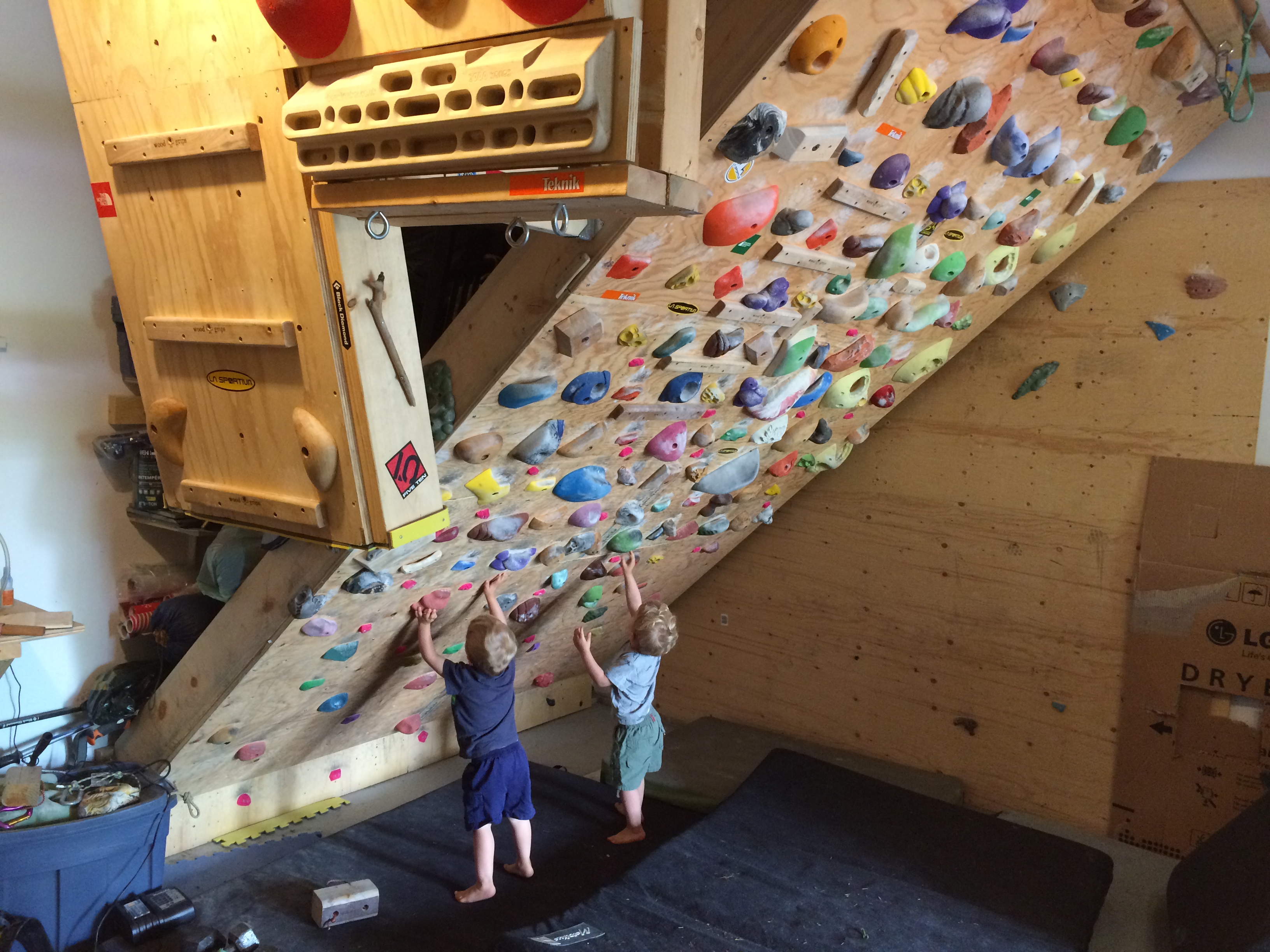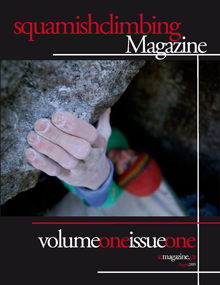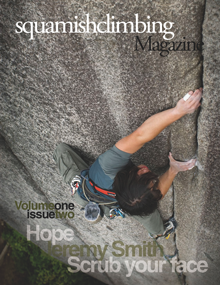When Mike Doyle recently sent Necessary Evil(14c), the prevailing theme in the media was how impressive this ascent was, given the fact that Mike has a full time job. Well, if you are anything like me, with a full time job AND a couple young kids to look after, the job alone hardly seems worth mentioning. I mean, when I think back to when I just had a full time job, it seems like a vacation. I could train every evening, and in the mornings before work, and all my weekends were spent climbing. 40 hours a week working was barely enough time to rest.
Things have certainly changed for me. Two years ago my wife gave birth to twin boys and my free time has all but disappeared. I now measure my climbing session in minutes rather than days. However, by making some sacrifices and sticking to a strict set of principles, I’m still able to fit climbing into my life and be the father and husband I want to be. In fact, I’m climbing better than I ever have. It seems having intensely little free time has enabled me to see how efficient I can be both in my training and climbing. I present 10 tips for how to maximize your climbing performance and accomplish your goals, with a minimal amount of available free time.
1. Live where you climb
Living as close to a climbing area as possible is the single best thing you can do to make sure you can get out and climb a lot. If you have 2 hours of free time, but you have to drive even 30 min to get to the rock, forget about it. If you have projects within 10-15 min of your doorstep, you will find you’re able to make it out a lot. If you haven’t yet had kids, but intend to one day, and don’t live near close to climbing, consider make the move now while it’s easier.
2. Learn to climb alone
When you are trying to fit your climbing into very specific, short windows, trying to coordinate with a partner is a death sentence. If you can learn to work your projects, and better yet, send them, alone, you are so much better off. Choose your projects with this in mind. If you’re a boulderer, get lots of pads, and if you climb routes, learn to work them on a soloist.
3. Love your fingerboard
Training on a fingerboard is by far the most efficient way to build the very specific strength required for climbing. With even just 30 minutes of free time, you can get a very effective workout done. If you have an hour, you probably won’t even need the whole time.
4. Train at home
Being able to get a good workout in, without leaving the range of your baby monitor is absolutely key. I have a small 45 wall in my garage, just three sheets of plywood. I also have a small campus board and a fingerboard. My set up is perfect, but it’s also more than a lot of people have space for, and thankfully, more than you really need. All you really need is a fingerboard mounted above a doorway, and everyone has space for that.
5. Focus on goals- no climbing just for fun
Now it’s time to really ask yourself what you want. Do you climb for fun? Is climbing a social outlet for you? Is having fun with a crew more important than sending your project? If that’s the case, well that’s awesome. Be honest with yourself and enjoy your climbing. And if that is really what you want, don’t beat yourself up if you aren’t improving or performing at your highest possible level. On the other hand, if you really want to climb your best, then it takes sacrifice. When you have very little time, spending any amount of it not directly working towards achieving your goals will significantly impact your chances of achieving them. Spending the vast majority of your climbing time alone, in little ditty caves, falling off the same hard moves over and over, isn’t always fun, but it will get you results. So really think about it, make sure you know what you want. If it’s to have fun, then go have fun. If it’s to maximize your performance then make the necessary sacrifices.
6. Train specifically for your goals
In order to make the most of your time, it’s important to set clear goals and train specifically for them. Write your goals down, figure out a plan, and train to make it happen. If you want to send a hard boulder problem, don’t waste your time building up your endurance. Don’t even waste time cross training. Instead, figure out exactly what areas you need to train to climb that boulder and train just that.
7. Night sessions
If your available climbing time isn’t restricted to daylight hours, you’ll be amazed at how much more often you can get out. There are a bit of logistics to setting up a good lighting system, but it’s well worth the effort. I have a coleman lantern and a couple of headlamps and that’s usually enough.
8. Be strategic
One of the great things about climbing is that there are many ways to increase your chances of success beyond just being a better climber. Having good skin, good rest, good conditions, the right beta, all these things make a huge difference. So be smart and strategic with your climbing. If it’s 28 degrees and your skin sucks, don’t go fall off the project that you almost sent a couple days ago in good conditions. Instead, do something productive. Perhaps work beta on something new, or forgo climbing for a training session or even more rest. When you are close to something big, take the extra rest day, or wait for the good conditions, tip the odds and make sure you have the best chance of success possible.
9. Dial in your warm up
It is exponentially easier to get away for 2 hours than 3. If you can learn to have really short productive sessions, you’ll get out more often. Dialing in your warm up is key. I personally find warming up on an indoor wall way more efficient. Some climbers use a portable fingerboard they can bring to their project. In any case, find a good repeatable warm up routine. The repeatable part is important. If you do the same warm up every time, you can refine it to make it both shorter and more effective.
10. Persistence
This final tip might be the most important one because it is more than just a tip, it is a philosophy every climber striving to improve should embrace. It’s painfully simple: show up and try hard, and do it over and over again. If you want to do a hard climb, go try that climb. Go try it even if you only have enough time to give it one burn. And the next time you have any free time at all, go back there. Keep going back, even when you have failed again and again. And if you can’t go to the climb, go train, get on your fingerboard, do anything that moves you closer to accomplishing that goal. Think about a small trickle of water wearing away a huge groove in a piece of rock. You must approach your climbing and your training with that same persistence. Everything else will follow.













